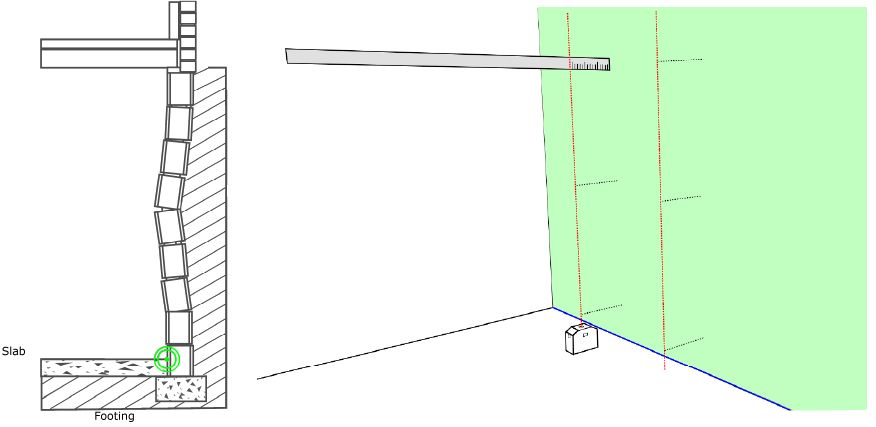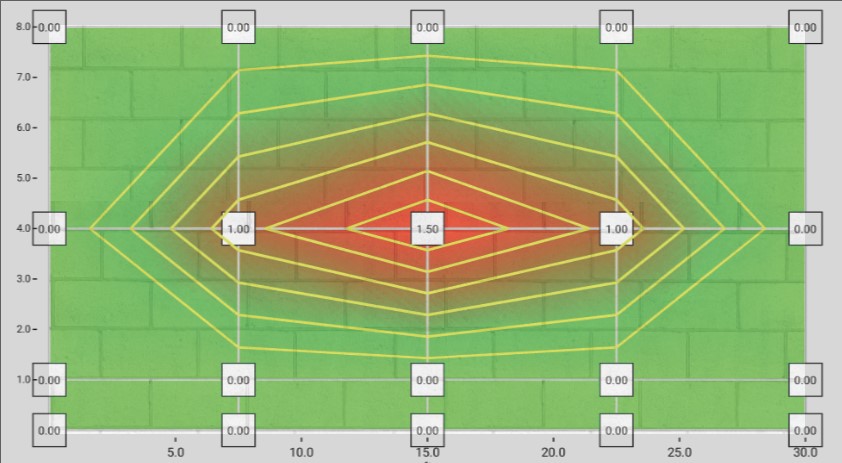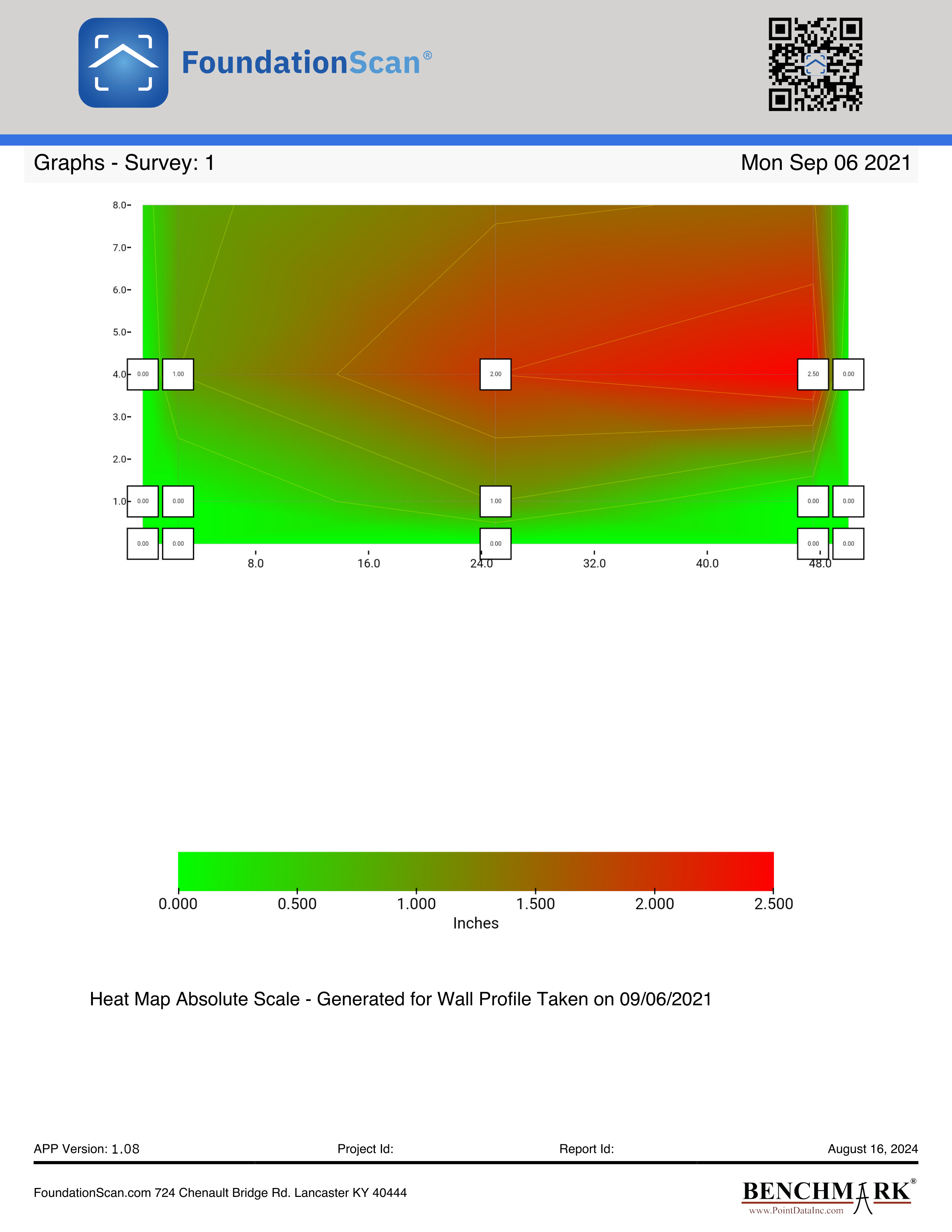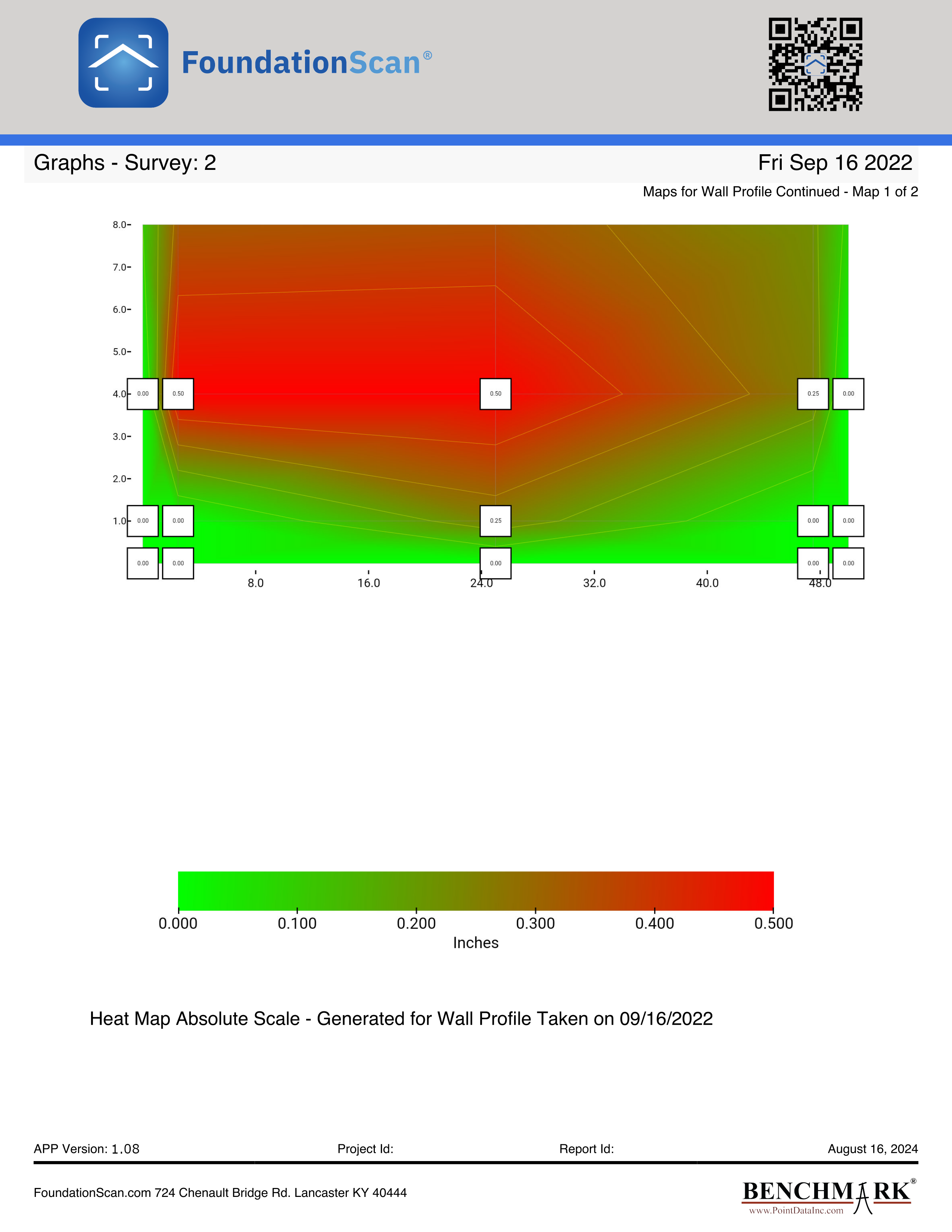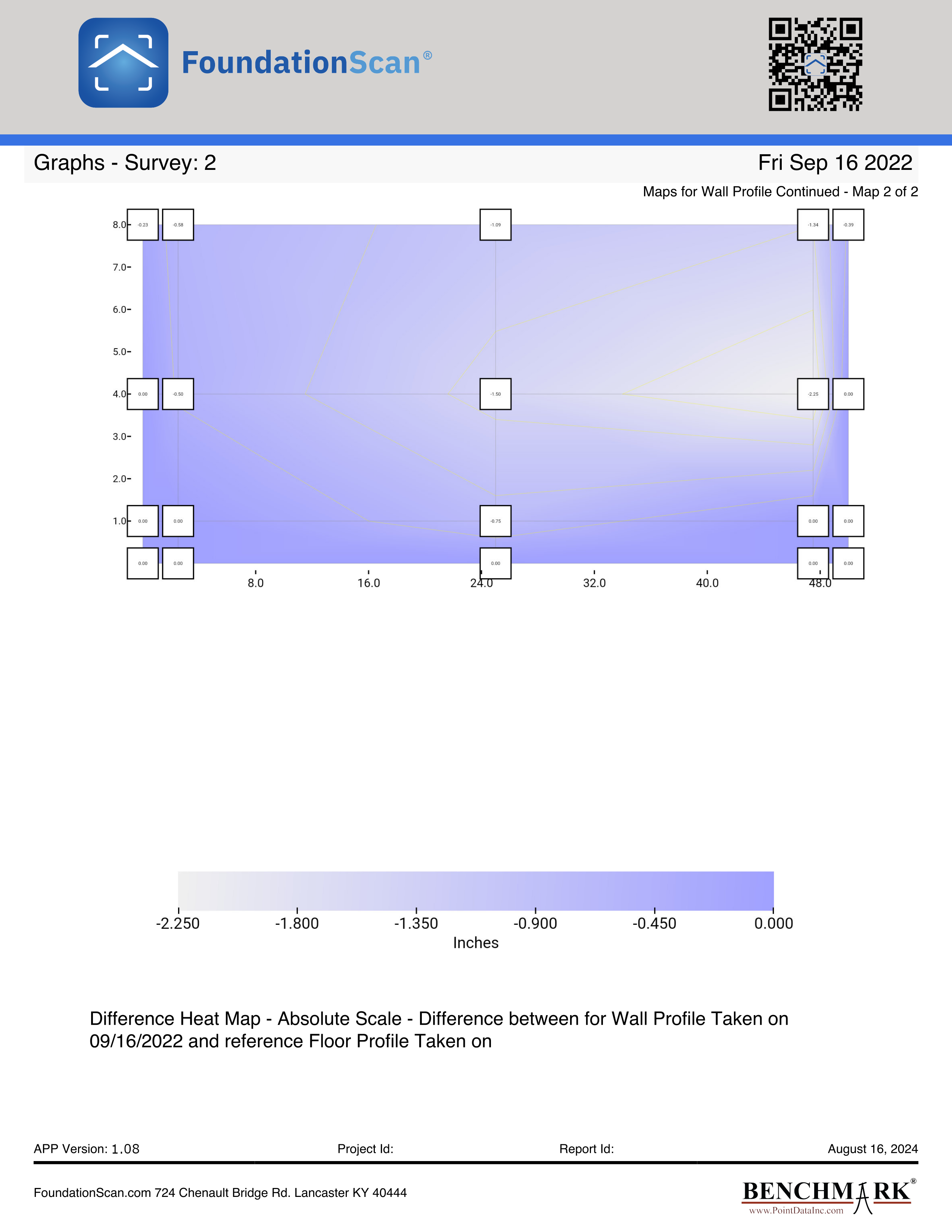Soil pressure can move basement walls impacting the foundation, sometimes severely. Three common types of basement wall movement are shown in the diagrams.
The Wall Profile report records the shape of the wall and shows it in a heatmap.
Key Benefits:
- Shows the entire wall as a single unit.
- Monitors changes over time, which may be critical if repairs are postponed.
- Rotated walls, the middle diagram, frequently cause a parallel shift in the opposite wall. The multi-wall wall profile report monitors up to 4 walls.
A bowed wall is shown at the far left. The slab and the footing and first row of blocks are held in place by the soil. So, the line where the first block and the slab meet, highlighted by the bullseye, is the original as-built construction line. That line is shown in blue in the next diagram. The distance between the as-built line and the wall defines the shape of the wall.
A laser and ruler are used to measure distances, and these are entered into the FoundationScan® App. Several vertical lines of data are taken to accurately measure the shape of the wall. (Small holes can be drilled in drywall if the basement is finished.)
Sometimes the first row of blocks sits on top the slab. In this case the first row of blocks can move, and the as-built construction line is estimated using the perpendicular walls.
The heatmap to the left is superimposed on a cinder block wall. The map is superimposed on a cinder block background to illustrate the relationship between the wall and the heatmap.
The measurements taken by the technician are shown in the point markers. The vertical lines are along the laser beam used to measure the distances. The App renders the heatmap after the data points have been entered.
The perpendicular walls hold the wall in place at the left and right edges, so the wall tends to bulge in the middle.
Series of data may be taken over time to keep a history of movement to monitor the wall, or to monitor wall stability after any repair.
Three pages from the report are shown. The first heatmap is from a data series taken in September 2021 and the second is from one taken in September 2022. The wall has clearly shifted during that year.
The third page shows the difference between the first and the second data series.


